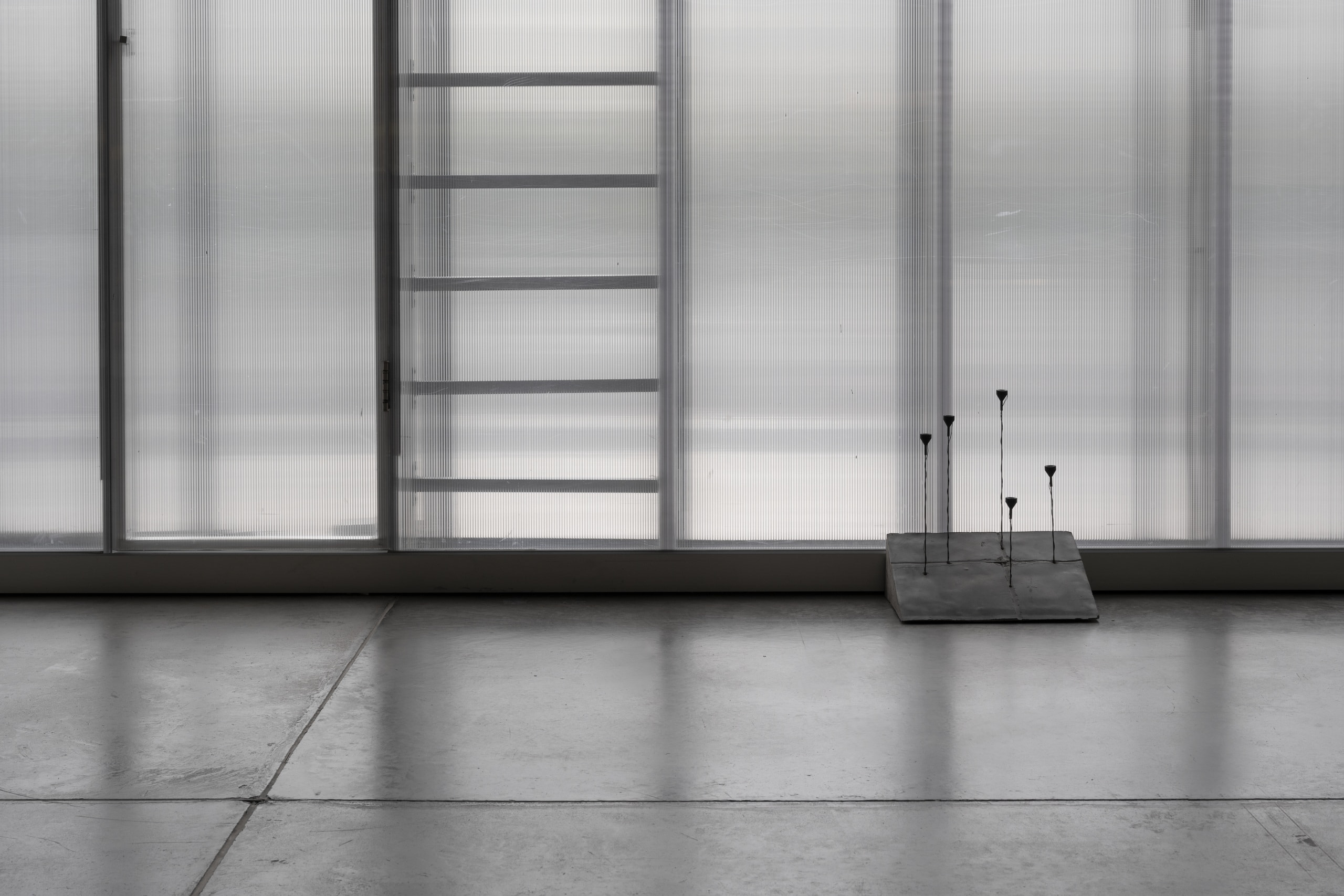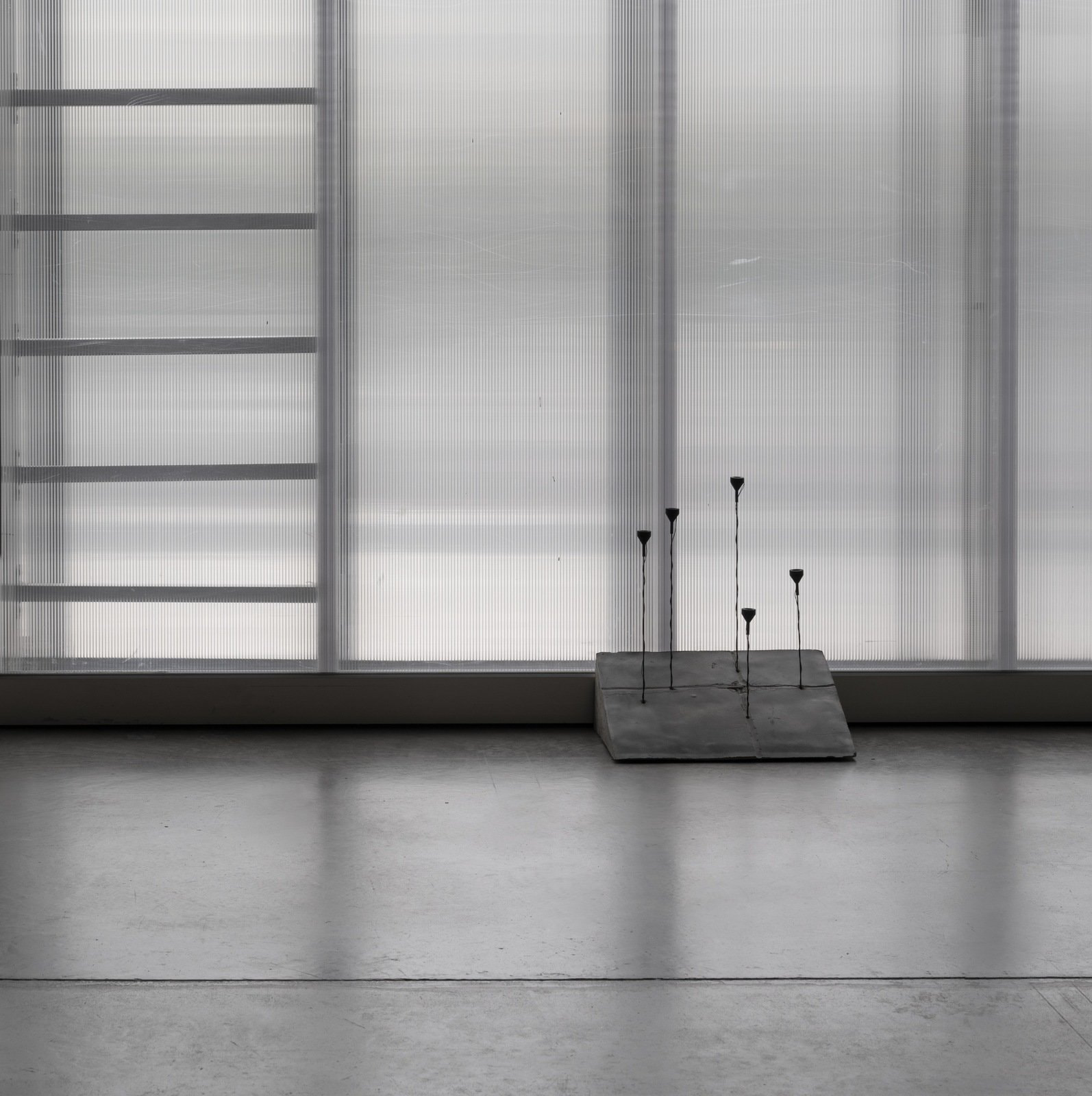Anna Martynenko’s project Noise Spores was created especially for Garage.
In it, the artist invites viewers to explore with the help of sound objects the Soviet modernist building that was formerly the restaurant Seasons of the Year and was reconstructed by Rem Koolhaas and the Dutch studio OMA. Martynenko has placed «noise spores» in unusual, little noticed spaces within the Museum and compares her choice of locations to the spreading of plants and mushrooms in urban spaces. However, her «spores» carry signals related to human communication.
Anna Martynenko often doubles elements of a space, and in this project each of her objects imitates the shapes found in the building: the tiles and joints on the floor or the brick patterns near them. This doubling effect brings to our attention details that we rarely focus on.
The artist is interested in is drifting attention, something formed by constant contact with digital environments. In Noise Spores she looks into how the interaction of different signals can affect their perception. The speakers that seem to grow out of objects on stems create a speech-like noise, based on readings from various sources: a text about new media can be layered over an instruction leaflet for cough lozenges, news on a recent business scandal, and a study on triradial symmetry. Voices merge, creating absurd, quasi-meaningful structures that are hard to grasp on listening.
As well as a simulation of contemporary information flow, each work contains a track with an audio description of the Museum space for blind and partially-sighted visitors, which stands out against other tracks. To record it, Anna Martynenko used the Lombard effect—the involuntary change of voice in a noisy environment—reading the text while listening to recordings of her own voice in the anechoic chamber of a research lab that studies the phenomenon. The audio description focuses on the building’s architecture, thus connecting the work’s location to its tactile characteristics and the acoustic field. She believes that the synchronization of various modes of perception through the effort of looking and listening in should help visitors focus their attention on the experience on being in a space.
The map of objects is available at the information desk.
Technical support: alyosha
Audio description: Maria Shchekochikhina, methodologist, Education and Inclusive Projects Department, Garage
Laboratory Lombard speech recording: Alexander Lunichkin, Candidate of Biological Sciences, researcher at Sechenov Institute of Evolutionary Physiology and Biochemistry of the Russian Academy of Sciences
Circuit engineer: Dmitry Shishov




